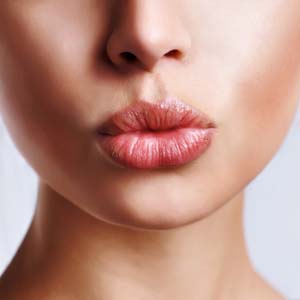By Doctor Catherine de Goursac
In order to get rid of a double chin, we must destroy the adipocytes and firm up and reshape the tissues. This is the challenge that aesthetic medicine is currently tackling, using a combination of innovative methods such as HIFU, tensor threads, low-frequency lasers and soon-to-be-available fat-melting injections.
Get rid of your double chin!
Cold lasers to empty the adipocytes
Completely non-invasive and safe, this cold or low-frequency laser emits a pleasant warmth to the application site. It empties the fat stored in the treatment area’s adipocytes. The skin requires no specific preparation; however, it is useful to ensure that it has no lesions. Emptying the fat in a double chin requires 3 to 4 sessions lasting around 20 minutes each, with 3 weeks in between each session. Sometimes the skin will need lifting afterwards, as it may sag once the fat has been lost.
HIFU to firm up the tissues and refine the jawline
High intensity focused ultrasound or HIFU is a non-surgical, non-invasive technique without injection or real pain. It enables us to treat both fullness (when targeting fat) and sagging skin (when targeting the dermis), as the device acts on different levels. For the double chin, we use it at two different levels:
Superficial layers: The energy is delivered into the deep and superficial dermal layers (3mm and 1.5mm). The HIFU corrects sagging skin.
Deep layers: The ultrasounds are delivered to a depth of 6mm and 4mm, and if the double chin is very thick we can also treat to a depth of 8mm.
The results are noticeable 15 days after the first session and intensify during the 3 months that follow. Plan for 2 sessions, with a month in between, for optimum results.
Tensor threads for severe sagging
Sometimes, the skin sagging is too severe and HIFU alone is not enough to reshape the jawline to the patient’s satisfaction. Threads do not act upon the fat, but can correct sagging skin on the neck and, in particular, the platysma bands. We use the new bio-absorbable and tissue-inducing tensor threads, in particular fine, barbed PDO threads or polylactic acid threads. In one session, they give the patient a quick and non-damaging lifting effect, without surgery or general anaesthetic. Furthermore, their components – polylactic acid or PDO (polydioxanone) – have proven their tissue-inducing ability, which encourages skin firming. A few weeks after the threads are inserted, the skin looks regenerated. This effect continues for at least six months after the threads have been completely absorbed, that is around 18 months in total. Easy to use, these threads do not require any downtime, though there might be a little bruising. In just one session, they create a fantastic lift. If the skin sagging is severe, a second session will be required 6 weeks after the first. Depending on the case, tensor threads alone can resolve the problem of a double chin, or they might be combined with a cold laser treatment.
In the future: DOC injections to melt excess fat
You may have heard of deoxycholate, which cosmetic doctors used very successfully 10 or 15 years ago. Unfortunately, because it did not obtain government approval for cosmetic use, it has since been banned. It has recently been approved by the FDA and there is no reason why Europe should not follow suit. If this is the case, it will be a very useful tool for treating double chins that are not caused by skin stasis. It works by dissolving the walls of the adipocytes, which contain fat, so that said fat can be eliminated naturally by the body. Two or three sessions suffice. This treatment can cause slight inflammation and bruising in the days that follow.
Doctor Catherine de Goursac
Cosmetic and anti-aging doctor for more than 20 years in Paris. Author of more than 30 publications, including “La médecine anti-âge” (Anti-aging medicine) and “L’esthétique au masculine” (Aesthetics for men) published by Editions Ellebore, “Les secrets de la dermonutrition” (The secrets of dermonutrition) published by Vuibert, and “Tu as bonne mine ce matin” (You look good this morning) published by Editions J Lyon. She is a member of the board of directors of the French Association of Morpho-Aesthetic Medicine (AFME) and the Federation of Aesthetic and Anti-Aging Doctors (FSMEA).















